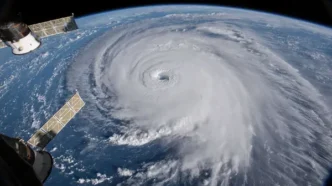Microsoft has unveiled Aurora, a cutting-edge AI weather forecasting model designed to predict atmospheric events faster and more precisely than traditional meteorological methods. Detailed in a recent Nature paper and accompanying blog post, Aurora leverages vast amounts of data to transform how weather is predicted.
How Aurora Elevates AI Weather Forecasting
Aurora is the product of training on over a million hours of diverse weather-related data. This includes satellite imagery, radar scans, ground-based weather stations, simulations, and prior forecasts. Microsoft has designed the model to be adaptable: it can be fine-tuned using extra data to improve its accuracy for specific weather events.
Although AI weather forecasting isn’t new — Google DeepMind, for example, developed WeatherNext, a model that claims to outperform some of the best forecasting systems worldwide — Microsoft positions Aurora as a top contender in the space. According to Microsoft, Aurora not only advances forecasting precision but also accelerates predictions, offering valuable tools for scientists and weather researchers.
In practical tests, Aurora predicted the landfall of Typhoon Doksuri in the Philippines four days ahead of the actual event. This prediction came earlier than many expert forecasts. The model also surpassed the National Hurricane Center’s tropical cyclone track forecasts during the 2022–2023 season. Additionally, Aurora successfully anticipated the 2022 sandstorm that hit Iraq, demonstrating its broad applicability to different weather phenomena.
Faster Forecasts With Lower Computing Costs
One significant breakthrough with Aurora is its efficiency. Training the AI model demanded substantial computing resources, but once trained, Aurora generates forecasts within seconds. This is a stark contrast to traditional weather models, which often take hours to run on supercomputers.
Microsoft highlights that this speed does not compromise accuracy. Instead, Aurora’s rapid forecasts enable more timely and actionable insights. Such improvements could transform emergency response and preparedness for severe weather events worldwide.
Moreover, Microsoft has made Aurora’s source code and model weights publicly available. This openness encourages further development and adaptation by researchers and developers.
Microsoft is already integrating Aurora into its MSN Weather app. A specialized version of the model produces hourly forecasts, including detailed cloud predictions, bringing AI-powered weather insights directly to users.













